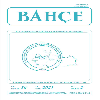TÜRKİYE’DE YEM BİTKİSİ OLARAK KULLANILAN BAZI Fabaceae TÜRLERİNİN MOLEKÜLER FİLOGENETİK ANALİZLERİ
MOLECULAR PHYLOGENETIC RELATIONSHIPS OF SOME Fabaceae SPECIES THAT USED AS FORAGE CROPS IN TURKEY
___
- 1. Balcı Akova, S., G. Şahin, 2019. Status of forage legumes in Turkey within the scope of 2016 year of pulses. Social Sciences Studies Journal (SSS journal) (ISSN:2587-1587) 5(37):3039-3056.
- 2. BEAST (Bayesian Evolutionary Analysis Sampling Trees) Version v2.5.2, 2002-2019.
- 3. Bueno, E., T. Kisha, S.L. Maki, E.J. Von Wettberg, S. Singer, 2019. Genetic diversity of Chamaecrista fasciculata (Fabaceae) from the USDA germplasm collection. BMC Research Notes 12(1):117.
- 4. De Faria, S.M., G.P. Lewis, J., I. Sprent, J.M. Sutherland, 1989. Occurrence of nodulation in the Leguminosae. New Phytologist 111(4): 607-619.
- 5. Drummond, A.J., M.A. Suchard, D. Xie, A. Rambaut, 2012. Bayesian phylogenetics with beauty and the beast 1.7. Molecular Biology and Evolution 29(8):1969-1973.
- 6. Durieu, P., S.J. Ochatt, 2000. Efficient intergeneric fusion of pea (Pisum sativum L.) and grass pea (Lathyrus sativus L.) protoplasts. Journal of Experimental Botany 51(348): 1237-1242.
- 7. Edgar, R.C., 2004. MUSCLE: multiple sequence alignment with high accuracy and high throughput. Nucleic Acids Research 32(5):1792-1797.
- 8. Graham, P.H., C.P. Vance, 2003. Legumes: importance and constraints to greater use. Plant Physiology 131(3):872-877.
- 9. Hamby, R.K., E.A. Zimmer, P.S. Soltis, D.E. Soltis, J.J. Doyle, 1992. Molecular systematics of plants. Chapman and Hall, New York, 50-91.
- 10. Koivunen, E., K. Partanen, S. Perttilä, S. Palander, P. Tuunainen, J. Valaja, 2016. Digestibility and energy value of pea (Pisum sativum L.), faba bean (Vicia faba L.) and blue lupin (narrow-leaf) (Lupinus angustifolius) seeds in broilers. Animal Feed Science and Technology 218:120-127.
- 11. Kumar, S., G. Stecher, M. Li, C. Knyaz, K. Tamura, 2018. Mega X: molecular evolutionary genetics analysis across computing platforms. Molecular Biology and Evolution 35:1547-1549.
- 12. Legume Phylogeny Working Group (LPWG), 2013. Legume phylogeny and classification in the 21. century: progress, prospects and lessons for other species-rich clades. Taxon 62:217-248.
- 13. Lewıs, G., B. Schrire, B. Mackinder, M. Lock, 2005. Legumes of the world. Royal Botanic Gardens, Kew.
- 14. Metin, H., T. Çeter, S.K. Erkul, 2018. Micromorphological characters of pollen, leaflet and seed of Astragalus victoriae and Astragalus melanophrurius endemic to Turkey. Mellifera 18(1):22-29.
- 15. Özdem, M.A., 2012. Dünya ve Türkiye’de kuru baklagiller. TEPGE Bakış, Copy: 7, p.9, Ankara.
- 16. Reckling, M., G. Bergkvist, C.A. Watson, F.L. Stoddard, P.M. Zander, R.L. Walker, J. Bachinger, 2016. Trade-offs between economic and environmental impacts of introducing legumes into cropping systems. Frontiers in Plant Science 7:669.
- 17. Rogers, S.O., A.J. Bendich, 1987. Ribosomal RNA genes in plants: variability in copy number and in the intergenic spacer. Plant Molecular Biology 9(5):509-520.
- 18. Şahin, G., 2016. 2016 Uluslararası bakliyat yılı hasebiyle Türkiye’de mercimek (Lens culinaris Medik) yetiştiriciliği. Atatürk University Journal of Graduate School of Social Sciences 20(4):1665-1696.
- 19. Tsegay, B.A., B. Gebreslassie, 2014. The effect of salinity (NaCl) on germination and early seedling growth of Lathyrus sativus and Pisum sativum var. abyssinicum. African Journal of Plant Science 8(5):225-231.
- ISSN: 1300-8943
- Yayın Aralığı: Yılda 2 Sayı
- Başlangıç: 1968
- Yayıncı: Atatürk Bahçe Kültürleri Merkez Araştırma Enstitüsü
VITICULTURE INDUSTRY OF ATU GAGAUZIA AND ITS DEVELOPMENT IN MODERN CONDITIONS
FARKLI KİŞNİŞ (Coriandrum sativum L.) ÇEŞİT VE POPÜLASYONLARININ ANYON VE KATYON İÇERİKLERİ
ALTERNATİF PROTEİN KAYNAĞI OLARAK BÖCEKLERİN KANATLI KARMA YEMLERİNDE KULLANIMI
Mehmet Akif ÖZCAN, Mustafa MİDİLLİ
SERT KABUKLU MEYVE TÜRLERİNİN VAN GÖLÜ HAVZASINDA MEVCUT DURUMU VE POTANSİYELİ
AHIR GÜBRESİ VE AZOTLU GÜBRE UYGULAMALARININ DEREOTU (Anethum graveolens L.) VERİMİ ÜZERİNE ETKİSİ
ALIÇ (Crataegus azarolus L.) TOHUMLARININ ÇIKIŞ ORANLARI ÜZERİNE BAZI UYGULAMALARIN ETKİLERİ
Oğuzhan ÇALIŞKAN, Derya KILIÇ, Kazım MAVİ, Safder BAYAZIT
BADEMDEN ÇÖĞÜR ELDE EDİLMESİ ÜZERİNE BİR ARAŞTIRMA
Turan KARADENİZ, Gülşah ÇATMADIM, Muharrem ARSLAN, Levent KIRCA
